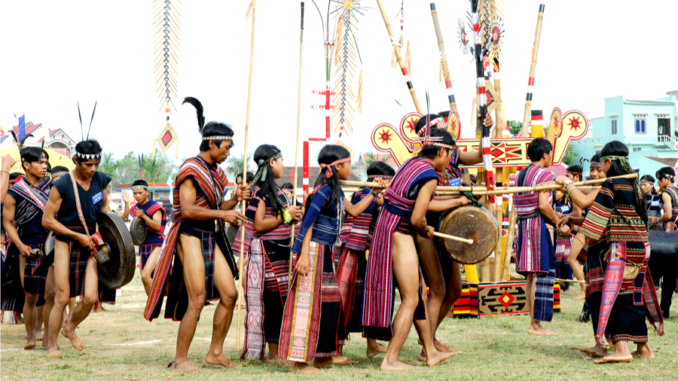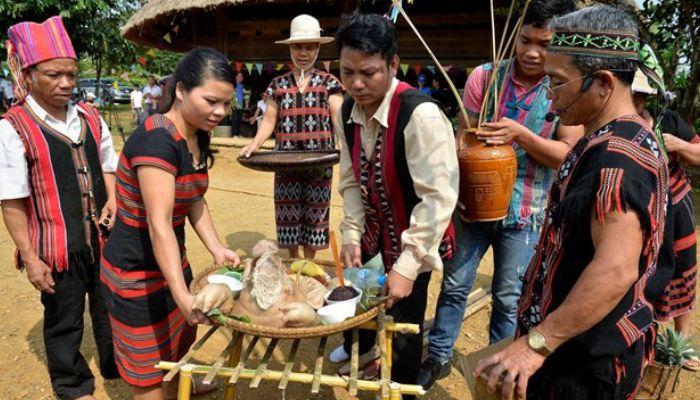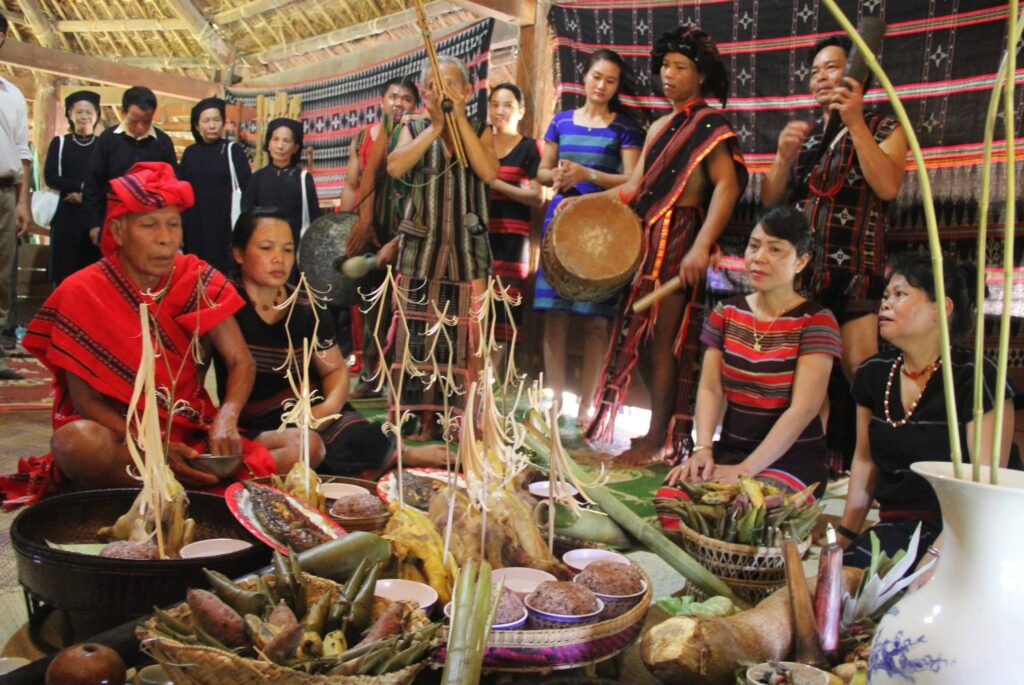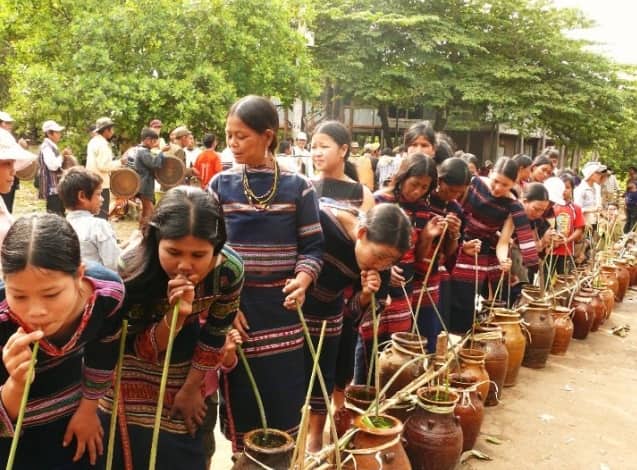
Every year, in December, after the harvesting time, Daklak people celebrate their crops. The Ede people call it the Mnam Thun and the H’Mong People call it the Mnambar, Brirhai. The festival used to last a month from one family to another in the order accepted by the oldest man of the village. Each family slaughters pigs or buffaloes, dances, plays gongs and flutes according to their ability and their crops.
This is also the occasion to show gratitude to their ancestors, to the Rice God, to Yàng and an occasion to invite all villagers to share their happiness. This is also an occasion to celebrate a new year and to hope for a happy future. Nowadays this festival lasts only a few days.
Indigenous people in the Central Highlands in general, Dak Lak in particular, have a unique ritual culture – festivals. It goes throughout the life of each person, from the time of birth in the womb to birth, mature and then return to the ancestors world as worship when pregnant mother, ritual before birth, The worshiping ceremony is called the blowing of the ears, the worshiping ceremony is full of harvesting, the worshiping is full of three seasons, the worshiping is full of seven seasons, the worshiping ceremony is full of 15 seasons, the worshiping ceremony is full (17 rounds) , husband’s ceremony, husband’s wedding ceremony, health ceremony for young couple, yearly health ceremony of each family, including the rituals of offering new rice.
According to the custom of the Ede, after harvesting the rice, bringing the rice to home, filling up the family, every family is carrying a rice ceremony and offering rice to pray for rice gods to help the landlord always get rice. Next to every house is a new rice ceremony.

The new rice offering is divided into two parts: the “worshiping god” and the “eating new rice”. The scale and time of the festival depend on the conditions, productivity harvest after the season of each family, relatives in the village. The unique feature is the new rice eating ceremony organized by each household. Accordingly, the family has a better harvest, the new meal ceremony is more stiff, prolonged throughout the morning till night. When the family offers rice, they invite their relatives in the village to attend the feast, eat, and enjoy. The new rice ceremony in crowded villages lasts for a month, with some households lasting 2-3 weeks.
Normally, when approaching the new rice offering day, the atmosphere of preparation spread to the end of the village. During this time, in the village of Ede, people pound rice from the sunrise until it hides behind the mountain. During the preparation process for the festival, every part of the work is almost man-made, from preparing wine, slaughtering pigs, chickens to burdening water, cutting wood to fire, and inviting guests. The woman is usually more biased than others in preparation and Ceremony work. They only concentrate on the preparation of gorgeous floral dresses for the festival. The young people in the village are eagerly waiting to join in the Festival.
New Rice offerings of rice include pork; Wine; new rice; water; tobaccos; coal stove; The farm equipment (a plough, a plough, a machete, an ax,..). After the offering is finished, the owner will invite experienced worshipers, all people respectfully perform the ceremony for Yàng (god). In the ceremony, the shamans representing the household owner read the vows expressing their gratitude to the Yàng for a flourishing and prosperous harvest, blessing Yàng for the next crop of rice, which will have maize corn full of houses, full of warmth.

At the end of the vows, the shamans wave alcohol at the fire, gongs, stairs, rice store to bless When the ritual is closed, it is time for an all night party. Housewives in the household were offered to suck the Cần wine first, then to the oldest women, followed by the elders, the older relatives, and the last is villagers. Everybody in the village will eat and drink happily until they do not want to have fun anymore.
When the festival goes on at midnight, some people will play the gong for everyone to listen to. The voice of Aray song is also performed in a deep, low voice. At night, a household owner or village elders in the village sing Khan on the fire flicker (Singing Khan is a genre of singing that narrates traditional epics and epics of Central Highlands heroes such as Đăm San, Đăm Di, Dyông Dư,..). The accent is as strong as the waterfall, gentle as the river. The fun party will last until the next morning.

If you’re ever in Daklak during December, experiencing the Ede and Hmong New Year’s celebrations is a truly special opportunity to immerse yourself in the rich cultural traditions of these fascinating communities.
Vietnam warmly welcomes you to enjoy Vietnamese cuisine and culture and to make your trip go smoothly as the very first step, make your plan into reality by obtaining a Vietnam visa at https://www.vietnam-evisa.org.